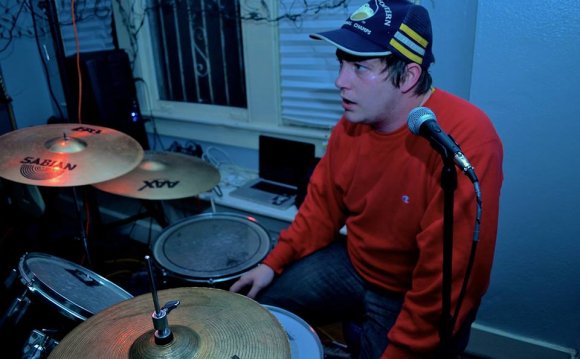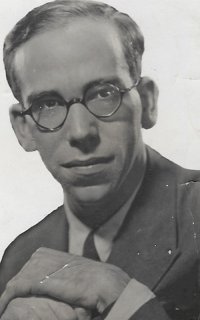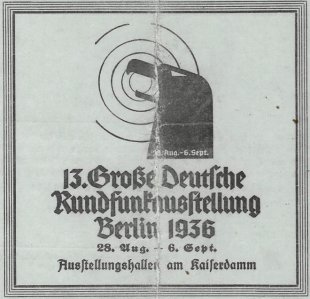
 Wolja Saraga’s proposition for a photo-electrical instrument in 1932 through the HHI archives
Wolja Saraga’s proposition for a photo-electrical instrument in 1932 through the HHI archives
Saraga took a version of the Generator to London after he left Berlin when it comes to UK in 1938 ( He also brought a Volkstrautonium purchased as a marketing design from Telefunken) . He gave several presentations of the instrument for the Institute of Musical Instrument Technology (Holloway Rd, London N7) in May 1945 entitled “A Homophonic or single-note electronic musical instrument with a photo electric cell as playing manual – demonstration of an experimental model” and searched for commercial applications for the instrument including film soundtrack music and musical therapy for blinded war veterans.
Difficulties in sourcing electronic elements in post-war Britain hampered development of the tool which was fundamentally overtaken by much more sophisticated and flexible digital instruments regarding the 1950s
Wolja Saraga: Biographical Notes
Saraga ended up being a German-jewish Physicist, produced in Berlin to a Romanian dad and a Russian mama. Saraga learned telecommunications in the Heinrich Hertz Institute (‘Heinrich-Hertz Institut Für Schwingungsforschung’ or ‘HHI’) in the Specialized University, Berlin under Prof Gustav Leithäuser – alongside luminaries including Oskar Vierling, Harald Bode, Winston Kock and Friedrich Trautwein.
It was during their time during the HHI he started investigations into electronic music tools, his published documents detailing; a twin oscillator Aetherophone or ‘Theremin‘, a ‘Poly-rhythmic Electronic Musical Instrument’, The workings of the Volkstrautonium and his design for a photo-optical tool, the ‘Saraga Generator’ first built in 1931. Saraga became an investigation associate within institute and soon after a lecturer from1929-1933. He also learned physics and math within Humboldt University of Berlin, where he was granted a Dr. phil. in physics in 1935.
 During their amount of time in Berlin, Saraga had been really energetic in promoting the possibility of electric songs; He made a few community presentations and demonstrations of digital instruments including Theremins, Trautoniums along with his own ‘Saraga Generator’. Saraga has also been current playing the ‘Saraga Generator’ at the 1932/3 Global Funkaustellung (IFA) in which the very first ever before electric musical orchestra performed (Das ‘Orchester der Zukunft’).
During their amount of time in Berlin, Saraga had been really energetic in promoting the possibility of electric songs; He made a few community presentations and demonstrations of digital instruments including Theremins, Trautoniums along with his own ‘Saraga Generator’. Saraga has also been current playing the ‘Saraga Generator’ at the 1932/3 Global Funkaustellung (IFA) in which the very first ever before electric musical orchestra performed (Das ‘Orchester der Zukunft’).
It became obvious to Saraga in 1935-6 that as a Jewish scientist however don't have any future in brand new nationwide Socialist German Reich and begun to affect leave the united states, first to Switzerland and then into British. Saraga finally left Berlin in 1938 during the age 29. he was in the beginning held for six months regarding the Isle Of guy Hutchinson Camp as a German internee but was given a position doing work for the ‘Telephone production business’ (or ‘TMC’) in St Mary’s Cray, Kent in which, despite his unhappiness at his employers decreased desire for study, he remained until 1958.
Saraga after that joined The Associated electric Industries Research Laboratory in Blackheath, London as a study Scientist and Group commander in which he specialised in telephony filter design. In 1962, Saraga’s key contributions were recognised by the award of the Fellowship of the Institute of Electrical and Electronics Engineers, ‘for contributions to network theory and its application in communications’. In 1972, Saraga relocated full time to Imperial College, London where he became a postgraduate lecturer and researcher in network principle and math.
Saraga published some books and submitted several patents on system concept and telephony.
Sources
Archives of the Heinrich Hertz Institute/Heinrich-Hertz Institut Für Schwingungsforschung, Berlin, Germany
CIRCUIT CONCEPT AND APPLICATIONS, VOL. 8, 341 (1980) Obituary of Wolja Saraga by J. 0. SCANLAN
Saraga, W. “Elektrische Klangfarbenerzeugung, in FUNK-Bastler” 1932, Heft 38, S. 594, pimple. nach STANGE-ELBE 1993a, S. 15( “Electrical Timbre generation, into radio hobbyist” )
[Wolja] Saraga: Die “tönende Handschrift”, in: Funktechnische Monatshefte 1933, H. 10, S. 403-406, hier S. 406
W. [Wolja] Saraga: An Electronic drum with a Photo-Electric Cell as Playing handbook, in: Electronic Engineering 17 (1945), Juli, S. 601-603









